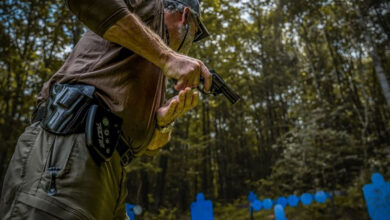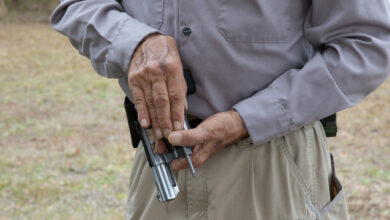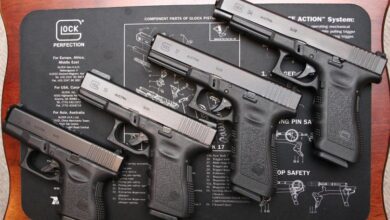Do Gun Free Zones Keep Us Safe?
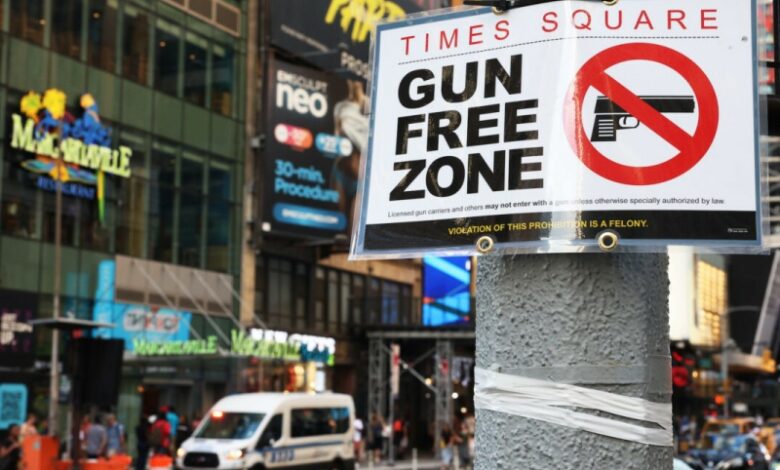
Boy, that’s a loaded question. Gun free zones are among the most contentious topics between gun rights and gun control advocates. One side claims gun free zones promote public safety. The other says they just turn people into targets. So, who’s right? Or can we even say with any certainty? Let’s break it down and see if we can answer the question of whether gun free zones keep us safe.
A Brief History of Gun Free Zones
Gun-free zones, as we understand them today, did not appear until 1990. That was the year Congress passed the Gun-Free School Zones Act of 1990, which then-President Bill Clinton signed into law. The law basically prohibits most firearms within 1,000 feet of a school but does not apply to individuals with state-issued carry permits. The Gun Free School Zones Act of 1994 requires schools receiving federal funds to suspend any student caught possessing a firearm on school property for at least one year.
Individual states beefed up gun prohibitions on school property and extended the idea to other places like airports, bars, restaurants, and churches. Gun free zones in public parks are also popular with local governments.
Some areas were “gun free zones” prior to 1990. Various states prohibited guns in schools and courthouses. Federal prohibitions existed and still exist in post offices, military bases, and other government facilities.
More recently, especially in the wake of the Supreme Court’s Heller and Bruen Decisions, states like New York, New Jersey, California, and others have implemented the “sensitive places” doctrine. Sensitive places are areas the state designates as “gun free zones.” New York and New Jersey, in particular, make it nearly impossible to carry a firearm in public, even with a permit.
What is a “Gun Free Zone?”
Well, that depends on who you ask. It seems self-explanatory, but the opposing sides of the gun debate have created competing definitions based on their advocacy work. And they don’t limit their differences to definitions. Each side also presents studies supporting their viewpoint. The problem is that the two most prominent studies differ by a whopping 86 percentage points. These studies also define “gun free zones.”
The first study was conducted by Dr. John Lott, a former University of Chicago economist and current director of the Crime Prevention Research Center. Lott is also the author of More Guns, Less Crime and The War on Guns, both of which lay out his arguments against the efficacy of gun control. Lott’s work is cited by most gun rights activist groups and many pro-gun politicians. Lott himself frequently testifies before legislative bodies and debates gun policy in the media.
The second study comes from Everytown for Gun Safety. Everytown is a leading gun control advocacy group founded and funded by former New York City Mayor and multi-billionaire Michael Bloomberg. Bloomberg also funds the Johns Hopkins University Center for Gun Violence Solutions, a major gun control think tank, the Moms Demand Action group, and dozens of anti-gun politicians at every level. Bloomberg is perhaps the country’s most ardent and engaged gun control activist.
These two studies disagree on almost everything, including what constitutes a “gun free zone.” Lott defines them as places classified by police or military policy “where it is illegal to carry a permitted concealed handgun, places that are posted as not allowing a permitted concealed handgun, places where ‘general citizens’ are not allowed to obtain permits, or where permits are either not issued to any general citizens or to only a very tiny selective segment.” Bruen ended that last one in 2022, but it’s still part of the study.
The Everytown definition is much simpler. Gun free zones, the study says, are “areas where civilians are prohibited from carrying firearms and there is not a regular armed law enforcement presence.” Everytown’s narrower definition partially accounts for the disparity between the two studies’ conclusions.
The Statistical Dispute
The full scope of those two studies is beyond this article’s focus. But we need to look at them briefly. Lott’s study concluded that 96% of mass shootings between 1950 and May of 2022 occurred in gun free zones. The Everytown study found that only 10% of mass shootings between 2009 and 2016 took place in gun free zones. The Washington Post pared down the incidents in Lott’s study to match Everytown’s time frame and still ended up with 86% of mass shootings happening in gun free zones. How is that difference even possible?
The answer lies in definitions and methodology. My undergrad degree is in Social Science, where I learned about studies, surveys, and methodology. I retain just enough of that to see what’s happening here. Lott’s wider definition of gun free zones will obviously catch more incidents than Everytown’s much narrower definition.
But each study also defines “mass shootings” differently. Lott conforms to the FBI’s definition of “active shooter” and excludes gang shootings and domestic violence. Everytown includes any shooting in which four or more people were killed, not including the shooter, including gang-related and domestic incidents.
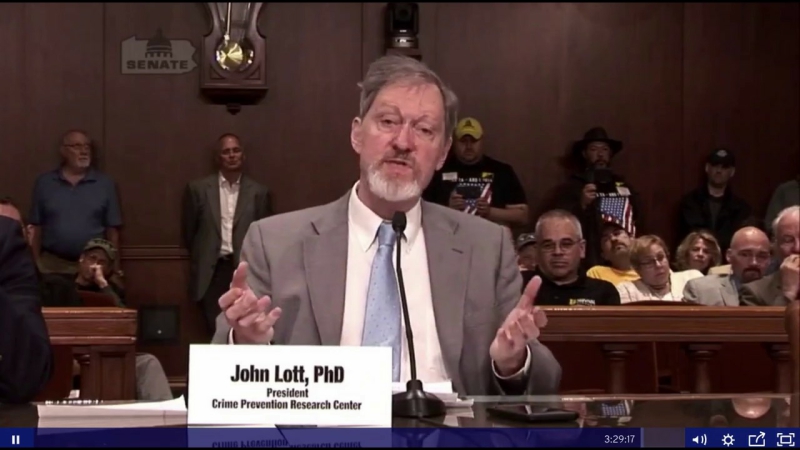
Here’s what that means. Lott’s numbers target what he calls a “specific type of shooting situation law enforcement and the public may face.” Lott says that gun free zones attract a certain type of murderer who targets locations based on the ability to maximize casualties and minimize resistance. Recent incidents indicate that many such shooters do indeed account for those factors. So, while Lott’s “gun free zone” definition is wider than Everytown’s, his incident parameters are more focused, significantly reducing the number of shooters. That drives his percentages way up.
Everytown’s methodology has the opposite effect. Despite their narrower gun free zone definition, Everytown includes all types of incidents that fit their “mass shooting” parameters. Their inclusion of gang violence and domestic shootings, in particular, drives their percentages way down.
Differing Conclusions
Lott contends that gun free zones attract active shooting incidents, which he also refers to as “mass public shootings.” “Mass public shootings,” Lott told the Washington Post, “are uniquely motivated,” unlike a gang fight or drug deal gone bad. He also stated that “shootings in private residences are distinctly different since they often involve killers who know the homeowners and whether they own guns.”
Everytown, unsurprisingly, disagrees. Sarah Tofte, the organization’s Director of Research and Implementation, told the Post “The claim that so-called ‘gun free zones’ attract mass shooters doesn’t stand up to scrutiny. It’s just not what the numbers show. We look closely at the data on mass shootings, and it shows that relatively few take place in areas where civilians are prohibited from carrying firearms. In fact, the vast majority of mass shootings take place in private homes and are often tied to domestic violence.”
Everytown’s data shows that 63% of mass shootings, according to their definition, took place in private homes. Private homes are not “gun free zones,” according to either study. Yet Everytown counts those shootings while Lott does not. You can decide for yourself whether those incidents should be applied to the gun free zone question or not.
My education and experience taught me that study and survey results can often be manipulated to achieve the desired results. It can be as subtle as the order in which multiple-choice answers are presented. Or it can include data sets that don’t match the question being asked. I’ll refrain from charging either side with doing that, though certain things appear fishy. Either way, such disparate results suggest that something’s going on.
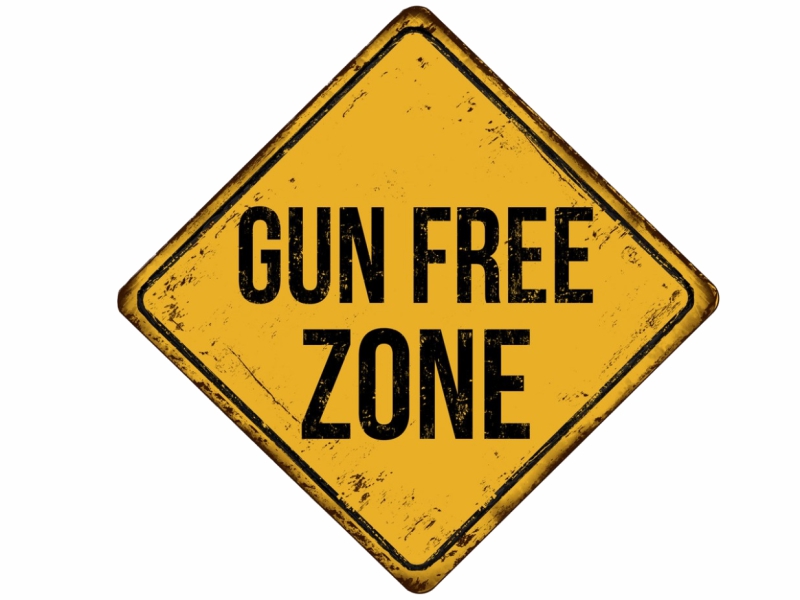
Do Gun Free Zones Keep Us Safe?
In a word, “no.” Believing that a simple sign, regulation, or law will hinder a determined killer is absurd. But designated gun-free zones supposedly serve another purpose. The Rand Corporation notes that gun free zones “establish the legal foundation for imposing screening measures, such as bag checks at stadiums or magnetometer screening at some schools or public buildings, that can be used to ensure that fewer or no guns are present in the location.”
The real question, however, is whether gun free zones actually attract deranged murderers. I can’t answer that one. My observations make me think that they can and that they have. But I haven’t yet seen a statistical analysis that convinces me one way or the other. Such analyses are all but impossible when we can’t even agree on what constitutes a “gun free zone,” much less what kind of shooting to include or not. I believe that the gun debate is so polarizing that honest research is currently impossible. And even if it was, each side is so suspicious of the other that half the country, assuming they pay attention at all, would refuse to believe it, no matter what the result.
So, personally, I avoid mandated gun free zones as much as possible. Not because I fear them but because it’s inconvenient. I don’t like removing my sidearm to go in somewhere. I grit my teeth and do it if I must, like at the post office, but I don’t go there any more than I must, for many reasons.
Just remember that signs don’t deter murderers and criminals. Never have. Never will.
Note: John Lott’s original study covered incidents occurring between 1950 and June 10, 2016. The study has since been updated to include incidents through May 2022, which we have included here. The Everytown for Gun Safety study has been removed from the organization’s website. I don’t know why. But it still provides a counterpoint to Lott’s work.
The post Do Gun Free Zones Keep Us Safe? appeared first on The Mag Life.
Read the full article here

